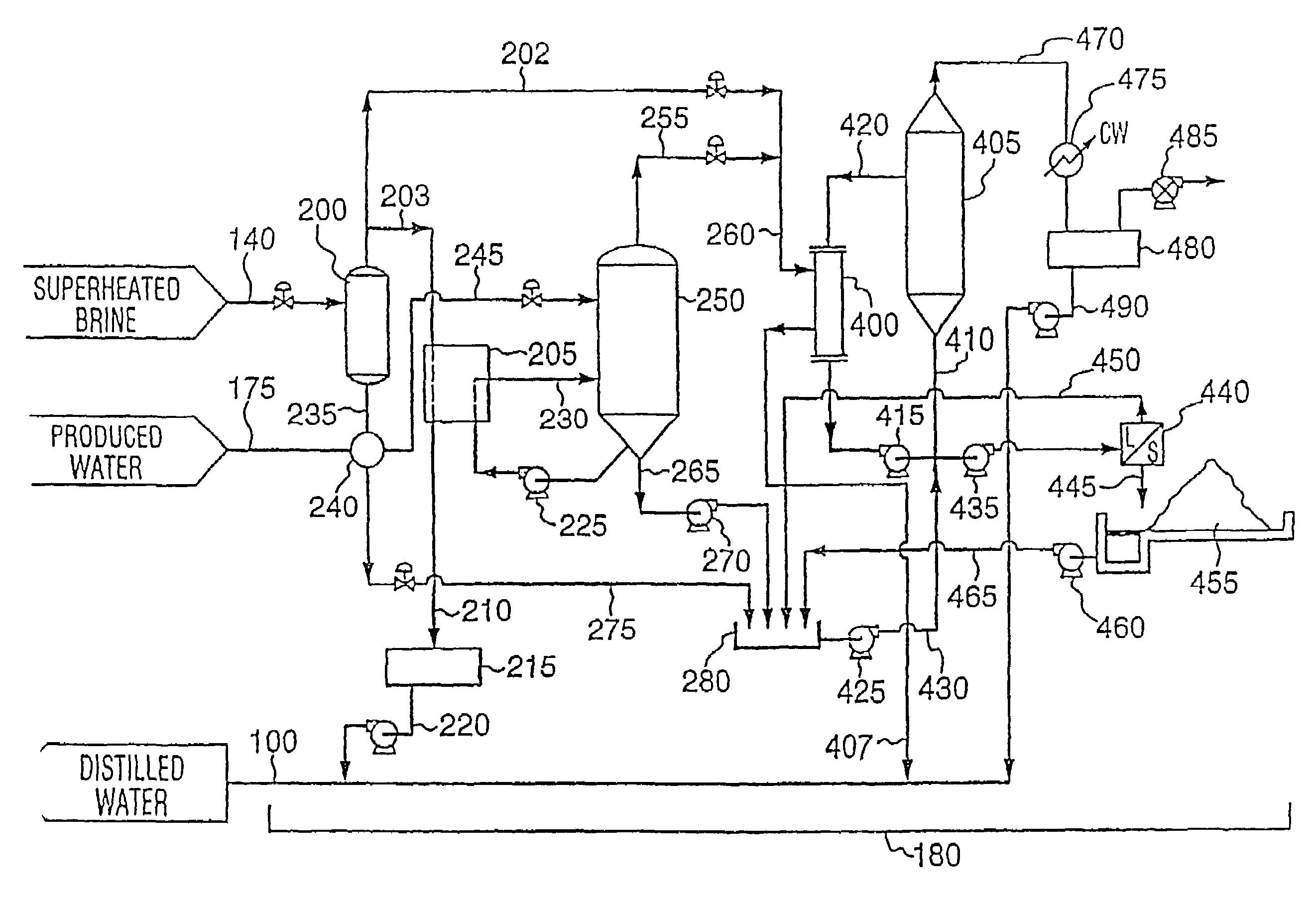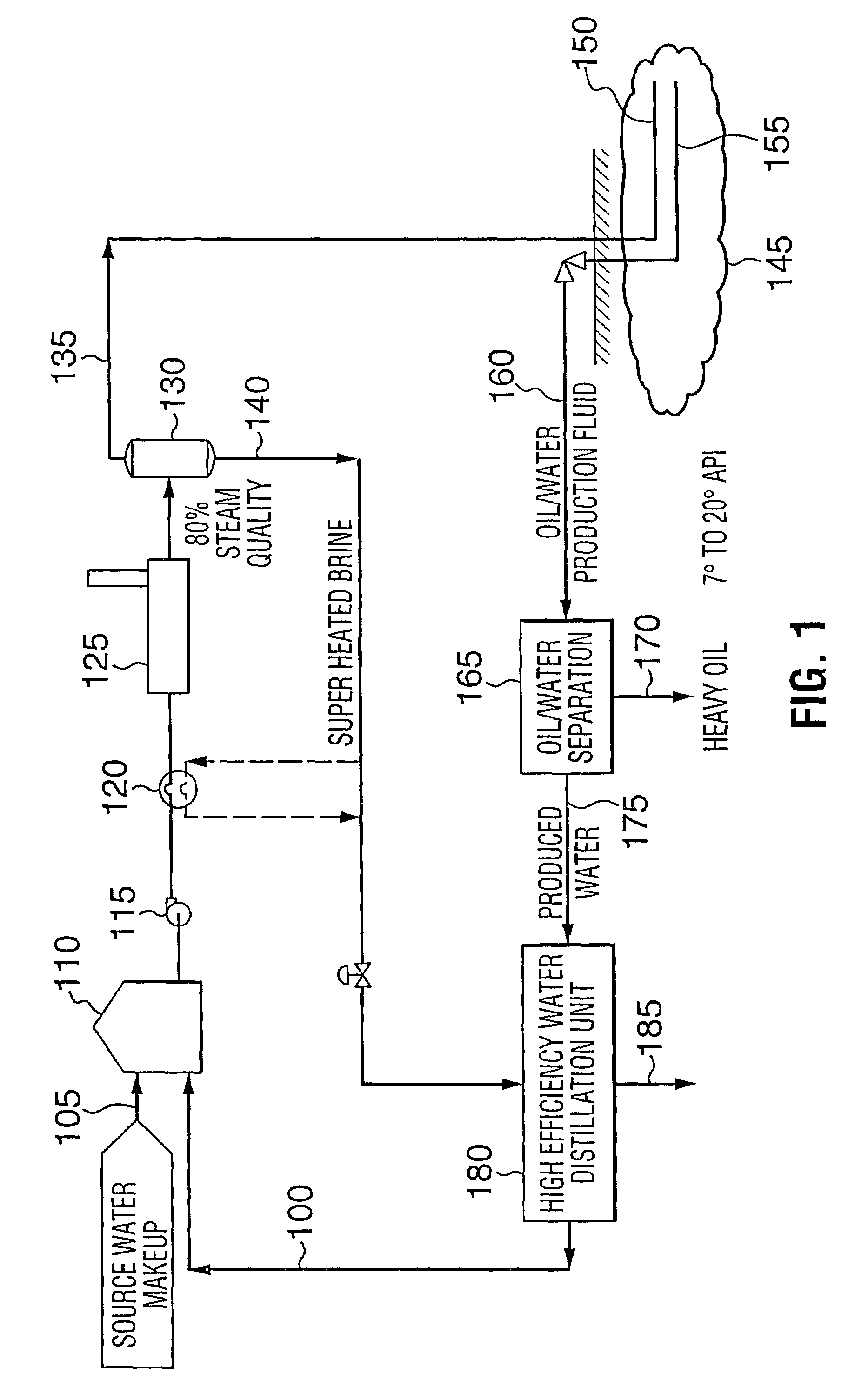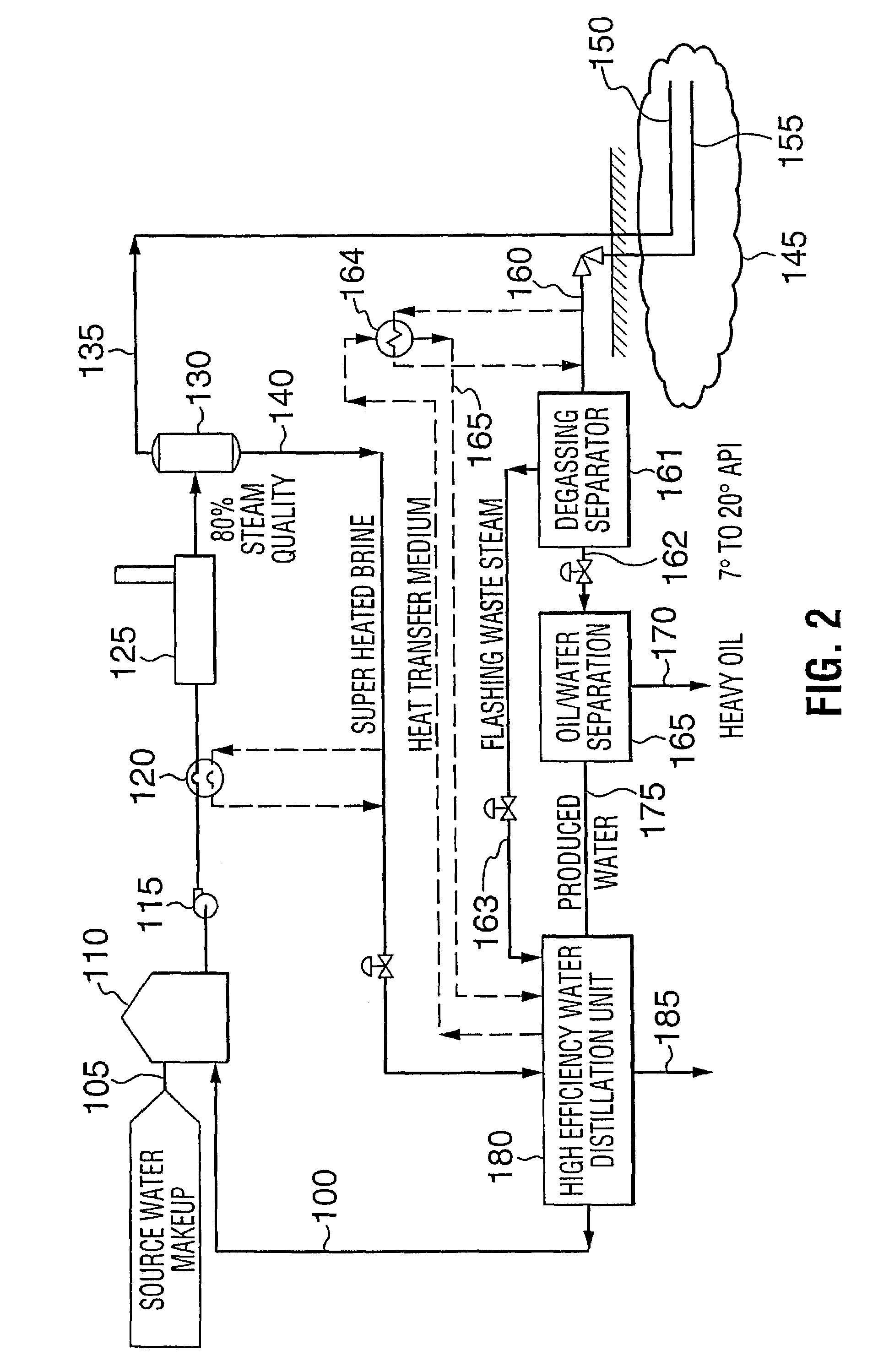Water treatment process for thermal heavy oil recovery
a technology of thermal heavy oil and water treatment process, which is applied in the direction of refrigeration components, refrigeration machines, borehole/well accessories, etc., can solve the problems of increased temperature of the recovered production fluid (oil and water), increased difficulty in recovering, and increased risk of steam generator operation, so as to facilitate water recovery and reduce input costs
- Summary
- Abstract
- Description
- Claims
- Application Information
AI Technical Summary
Benefits of technology
Problems solved by technology
Method used
Image
Examples
example 1
[0126]This example calculation is a means of demonstrating the heat balance around the reboiler exchanger. This example represents a design basis of a distillation unit designed to recover 53,000 USGPD of clean distillate from a contaminated source.
[0127]
Exchanger InformationSurface Area3,200 ft2TypeGasketed Plate-FrameU542 BTU hr−1 ft−2 F−1Corrected LMTD10.40 FCalculated Service Duty(3,200)*(542)*(10.40)18,041,224 BTU hr−1Calculated Heat Flux(18,041,224) / (3200)5638 BTU hr−1 ft−2Condensing SideInlet Conditions289° F. @ 21.0 psia (superheated)Outlet Conditions231.8° F. @ 20.9 psiaSaturated Condensing232.0° F. @ 21.0 psiaTemperatureLatent Heat of Condensing957.4 BTU lb−1 @ 21.0 psiaSteam Flow36.7 USgpm = 18,352 lb hr−1QDESUPERHEAT(18,352)*(0.45)*(289–232)471,131 BTU hr−1QCONDENSE(18,041,224–471,131)17,570,093 BTU hr−1Calculated Flow(17,570,093) / (957.4)18,352 lb hr−1Evaporating SideInlet Conditions212.2° F. @ 18.0 psiaOutlet Conditions213.6° F. @ 15.5 psiaLatent Heat of Vaporization968...
example 2
[0129]A prototype unit was fabricated designed to recover 10,000 USgpd of clean distillate from a landfill leachate lagoon. The unit was tested over an extended period and detailed performance test data was collected during this period. The pilot operated successfully for an extended four month period and upon inspection fouling was negligible in the reboiler and heated separator. The equipment used at the pilot test included a Spencer™ Model GF36204E Blower Compressor providing a 3.0 psi differential pressure. Standard single pass, plate-frame heat exchangers were used during the test.
[0130]The leachate feed, concentrated blowdown, and treated effluent characteristics were as follows:
[0131]
BlowdownLeachateapproxTreatedParameterUnitsFeed(2)10%(2)Effluent(2)BODmg l−12688CODmg l−12771,20711TOCmg l−1595496TSSmg l−133145VSSmg l−11529TDSmg l−15,47353,000 Calciummg l−196435Magnesiummg l−12281,990Sodiummg l−15504,650Ironmg l−15469.6Total Pmg l−11.51.5Ammonia as Nmg l−1531240.38(1)Total Alk...
PUM
| Property | Measurement | Unit |
|---|---|---|
| pressures | aaaaa | aaaaa |
| pressures | aaaaa | aaaaa |
| temperature | aaaaa | aaaaa |
Abstract
Description
Claims
Application Information
 Login to View More
Login to View More - R&D
- Intellectual Property
- Life Sciences
- Materials
- Tech Scout
- Unparalleled Data Quality
- Higher Quality Content
- 60% Fewer Hallucinations
Browse by: Latest US Patents, China's latest patents, Technical Efficacy Thesaurus, Application Domain, Technology Topic, Popular Technical Reports.
© 2025 PatSnap. All rights reserved.Legal|Privacy policy|Modern Slavery Act Transparency Statement|Sitemap|About US| Contact US: help@patsnap.com



